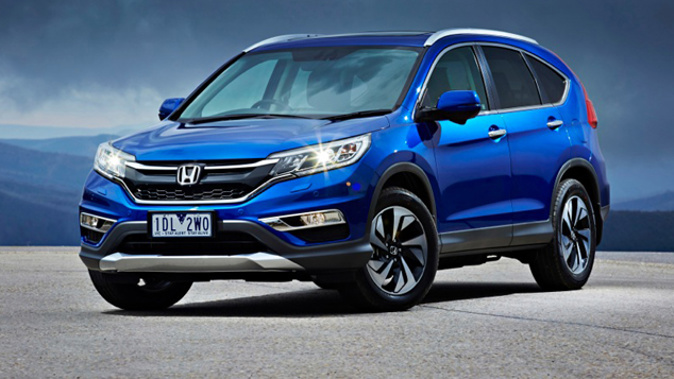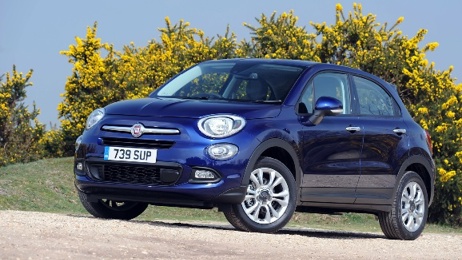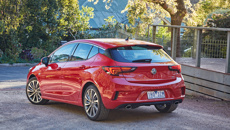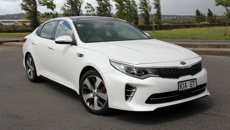
The trail blazing Honda CRV was one of the first Japanese models to crack the compact recreational SUV market 20 years ago, these days it’s battling hard for sales in this intensely competitive market.
When the original CRV was launched in 1996 it went on to become a huge success and it was hailed a long with the RAV4, as ground-breaking models, despite neither being that accomplished off-road. The similar sized Suzuki Vitara beat both these models to the market by seven years. However, the Suzuki really slotted into the conventional small off-roader category with its old school high/low 4WD system allowing it to scramble up hillsides, or plug through axle deep mud with disarming ease.
By contrast, the CRV and RAV4 ran new real time 4WD set-ups. These operate mainly 2WD mode with 4WD only kicking in when their respective computer systems, detect significant lose of traction at any of the vehicles wheels. This pair were really sparked the plethora of Japanese SUV’s that currently totally dominate our new car market. Almost every new car buyer it seems every want to be seen in an SUV style vehicle, with traditional sedan hatches and station wagons sales suffering. The SUV brigade now comes in shapes and sizes and plug almost every imaginable niche in the market. Little wonder other models are feeling the sales squeeze.
So where does this leave the current fourth generation CRV that broke cover here in 2012? The CRV is no longer the game changer it once was 20 years ago is now just one of the rapidly swelling urban SUV crowd. It faces a new threat from its recently launched smaller sibling the HRV, although it doesn’t offer the 2WD or 4WD options of the larger CRV.
CRV buyers are spoilt for choice with a 10 strong model range, one of the largest in the compact SUV class in this country, with $38,990 getting you into the entry level 2WD. From there it’s a fairly large and expensive leap to the $58,990 range topping NT Sport supplied for this road test.
However for those whose budgets won’t stretch to those lofty numbers, there are plenty of more affordable models sandwiched between those start and finish price points. The cheapest 4WD model sells for a competitive $42,990 a figure that compares favourably with most of its Japanese competitors. In the last couple of years Honda have certainly added a sharper edge to the CRV’s pricing. A more favourable exchange rate over this period has given Honda more wriggle room to do this. All Honda’s come with a five-year unlimited kilometre new car warranty that’s among the best on the market.
Honda still operates its long-standing “Price promise” strategy where they offer their best price, no haggling, which they past on to all buyers.
The problem for the company is this best price, for always been good enough to make the CRV a “Mover and shaker” in the compact SUV market anymore, as its competitor continue to offer substantial discounts to gain market share and hit sales targets.
The 140kw 2.4-litre i-VTEC motor also plys its trade in the Accord sedan and in 129kw form in Odyssey people-mover. While the power ouput looks impressive enough the engine seems to have a greater focus on efficency and refinement, rather than delivering an especially satisfying driving experience. In its defence, it does the basic well enough and that will be sufficent for many buyers. However, those most looking for that extra bit spring and zing in the engines step will be left a little disappointed. I guess you have to put things in pespective though and this four-cylinder engine is tasked with moving fairly heavy and chunky 4WD. Unlike a number of other models in this class, the CRV is an all-petrol power affair, with Honda opting not to offer a turbo diesel for our market, although it is available in Europe and the UK. Nissan New Zealand made similar call with their latest X-Trail that arrived last year.
The five-speed automatic works hard to inject bit of urgency into the engines performance but with limited success. While its gear changes are smooth and on cue, this transmission is dated. The expectation these days is that manufacturers should be coming the SUV party with automatics packing at least six forward gears. Honda needs to look to raise their ratio count by at least one, for the CRV automatic to keep pace with the opposition.
One of the cornerstones of this models success has been its roomy and versatile passenger compartment dotted with lots of clever internal storage. This current CRV is an adherent to that formula and why wouldn’t it be when it has worked so well. A long floor area provides the platform for a generous flat load surface. One drawback is the vehicles slopping rear roofline and chunky c-pillar that means rear visibility isn’t as good as it could be. This isn’t issue when reversing with an excellent back camera keeping an eagle eye out for anything obstructing the vehicles reversing path.
The independent front and rear suspension gets the the CRV closer than ever to that elsuive goal of car-like-handling. Honda’s real time 4WD chips in and provides extra grip and traction on wet slippery road surfaces and those that are gravelled and in still in plentiful supply on our local road networks. In juggling the competing demands of road holding and ride, Honda have struck a pretty good balance between both that should satisfy most owners. For a recreational SUV, this one nips assuredly through less demand bends, although not so composed, when asked to deliver a repeat performance when negotiating tighter and more exacting curves and corners.
Rating out of 10: Performance 6, Handling 6, Build Quality 6, Comfort 6, Space 7, Styling 5, Fuel Economy, Rightcar website 8.7L/100km, on road test average consumption, 10.1L/100km, Value for money, 7, Safety, Five Star ANCAP crash rating.
What’s the verdict? The CRV ticks all the boxes for practicality, space and versatility but not so many on the performance and ride and handling fronts.
Take your Radio, Podcasts and Music with you









